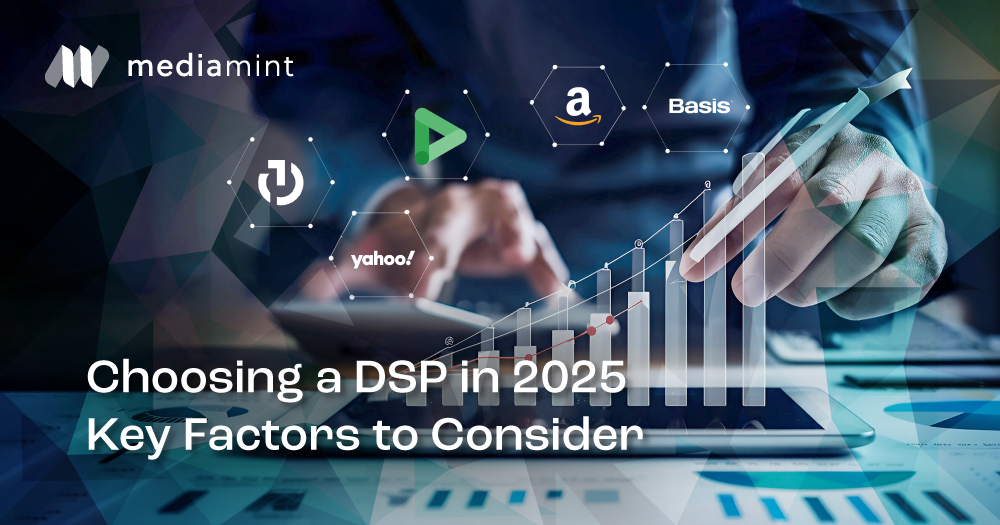The Operational Edge: How Smart Automation Is Reshaping AdTech in 2025

Smart automation isn’t about doing more. It’s about aligning data, logic, and execution to deliver real reach and performance.
The Shift to AI in AdTech Workflows
A shift is well underway in AdTech operations. Data volumes are exploding. Execution cycles are compressing, whether in real-time bidding or campaign refresh rates. The push for hyper-personalized, real-time campaigns across fragmented platforms is exposing the limits of legacy systems and duct-taped workflows.
This is no longer just about efficiency. It’s a competitive imperative.
Back in 2023, Gartner predicted that “by 2026, 60% of digital advertising workflows will rely on unified AI-driven platforms.” In 2025, that future is now. Automation is fast becoming the strategic backbone of high-performing AdTech operations.
Why Isolated Automation Fails in AdTech
Many teams start by automating isolated tasks such as pacing adjustments, alerting systems, or QA flags, without addressing the messy workflows they live inside. It’s like building a high-performance engine out of mismatched parts. It may run, but it won’t scale.
This was the trap with early Robotic Process Automation: high technical effort, limited business value. Why? Because the underlying data, logic, and human touchpoints were never addressed.
The real opportunity lies not in automating tasks, but in rethinking how decisions get made, and ensuring your data is accessible, governed, and usable.
Perfect data is rare. Most organizations still operate amid lag, inconsistency, and fragmentation. But waiting for a “clean data” future only delays business value.
The Difference: Knowing Where to Tap
Like the engineer who fixes a complex engine with a single well-placed tap, smart automation depends on judgment. Not every workflow needs AI. Not every inefficiency is worth fixing.
The true differentiator is operational perspective: understanding where automation drives real outcomes such as better ROAS, faster campaign adjustments, and more efficient media allocation.
That requires asking:
- How do your workflows actually run today?
- Where are the slowdowns, handoffs, and manual resets?
- Where are rules overridden, or exceptions the norm?
It also means acknowledging that not every issue is solved with a large language model or AI agent. These tools are powerful, but they’re still hammers. And not every advertising problem is a nail.
Embedding AI & Automation Where It Matters
Real transformation doesn’t come from layering tools on top of legacy processes. It happens when data, logic, and governance are embedded into the operational core: an environment built for scale, iteration, and transparency.
That’s the shift we’re seeing with platforms like Snowflake’s AI Data Cloud. By embedding automation within the core data environment, organizations can respond to real-time signals, govern data access, and trigger intelligent execution, without the delays and friction of siloed systems.
This is automation that reflects how your business actually operates, not how a template says it should.
The Bottleneck: Lack of Context
Most automation projects don’t fail because of bad code. They fail because the real-world context was never captured.
Teams focus on isolated steps such as budget pacing, alerts, and spend reallocation, without accounting for the upstream and downstream reality. These decisions live inside complex systems where manual overrides, fragmented data, and timing mismatches quietly introduce risk.
That’s why the most effective approach starts with questions like:
- Where does this decision live?
- What surrounds it?
- Where are exceptions and rule-breaks common?
As Ravi Ganatra, VP of Solutions Engineering, puts it:
“The most effective teams do more than integrate tools; they redesign operations. They embed logic directly where decisions happen and continually ask: where can automation truly enhance campaign lift, return on ad spend, or lifetime value?”
What Smart Automation Actually Looks Like
- Logic runs close to the data, reducing latency and manual sync
- Triggers act on real-time signals, not delayed batch reports
- Human time shifts from firefighting to optimization
- Outcomes improve: fewer errors, faster feedback, stronger ROAS
The key isn’t automating everything; it’s automating intelligently, in the places that actually move the business forward.
MediaMint brings together what automation efforts often lack: deep domain knowledge, operational insight, and applied AI expertise. We don’t just design smart systems – we implement them where they move the needle, across the Lumascape. The result is automation that actually works, not just runs.
As Paul Neumann, EVP of Strategic Growth & Value at MediaMint, puts it:
“AdTech environments are often unique, always interconnected, and continually moving fast … which means you simply can’t wait for perfect data. We see practical and smart AI progress happening when basic tenets are followed: start with today’s operational workflows, and confirm any change actually makes a measurable business impact.”
Because in this next chapter of AdTech, automation isn’t a system upgrade.
It’s a new way of working.
Want to see where smart automation can unlock performance in your ops stack? Let’s connect.




Comment